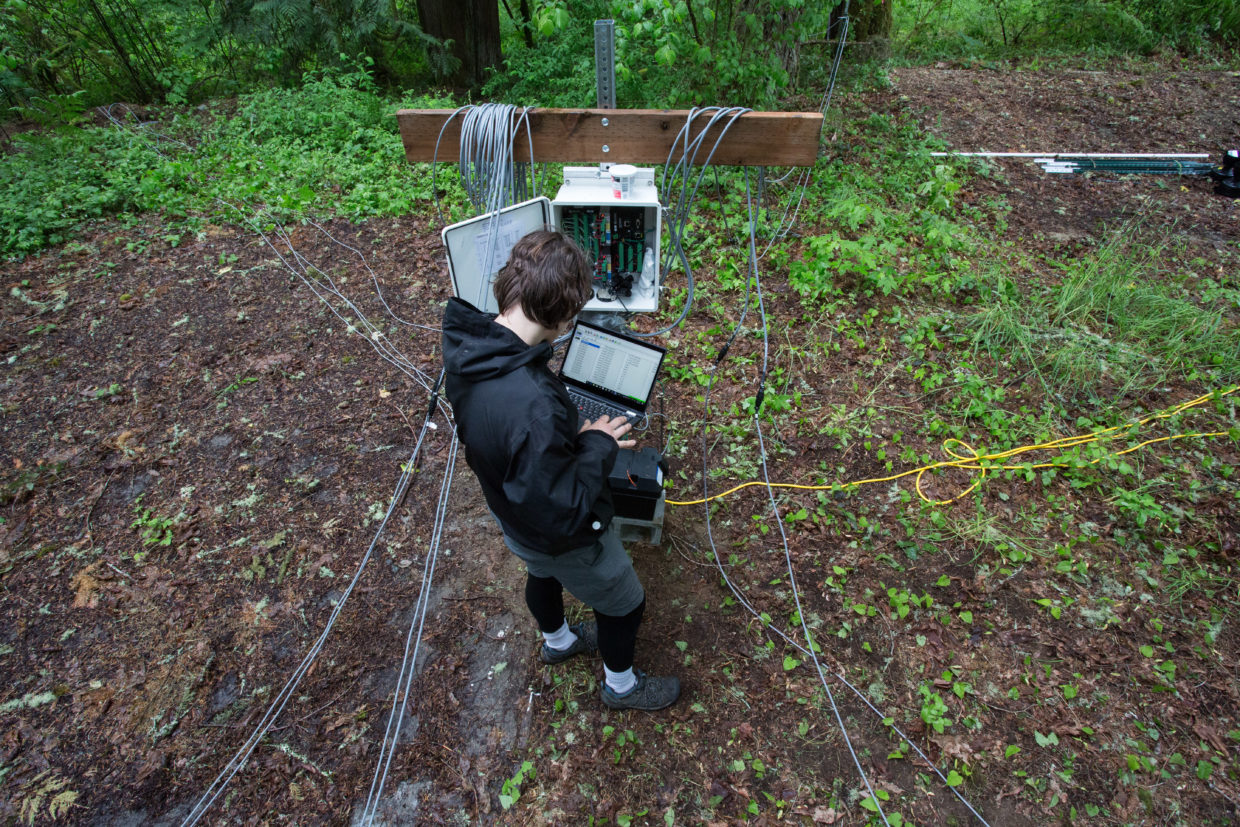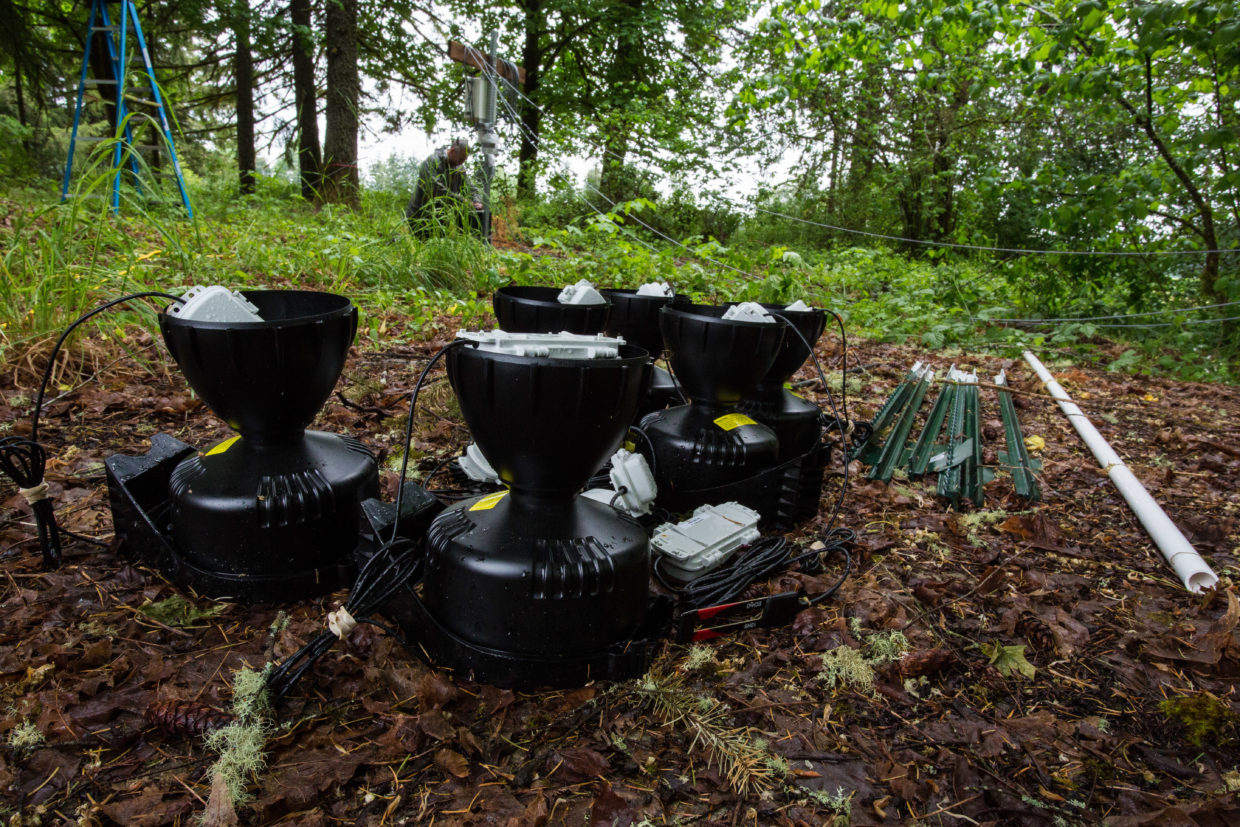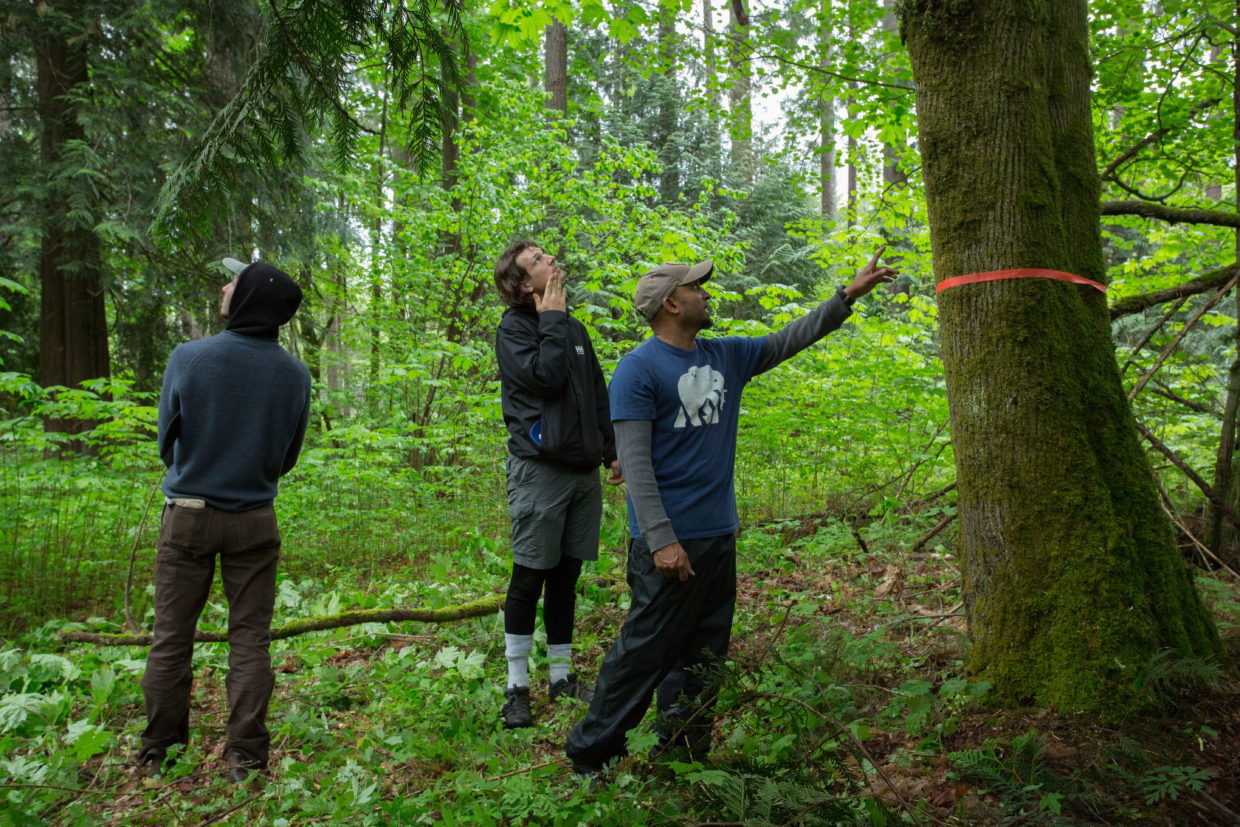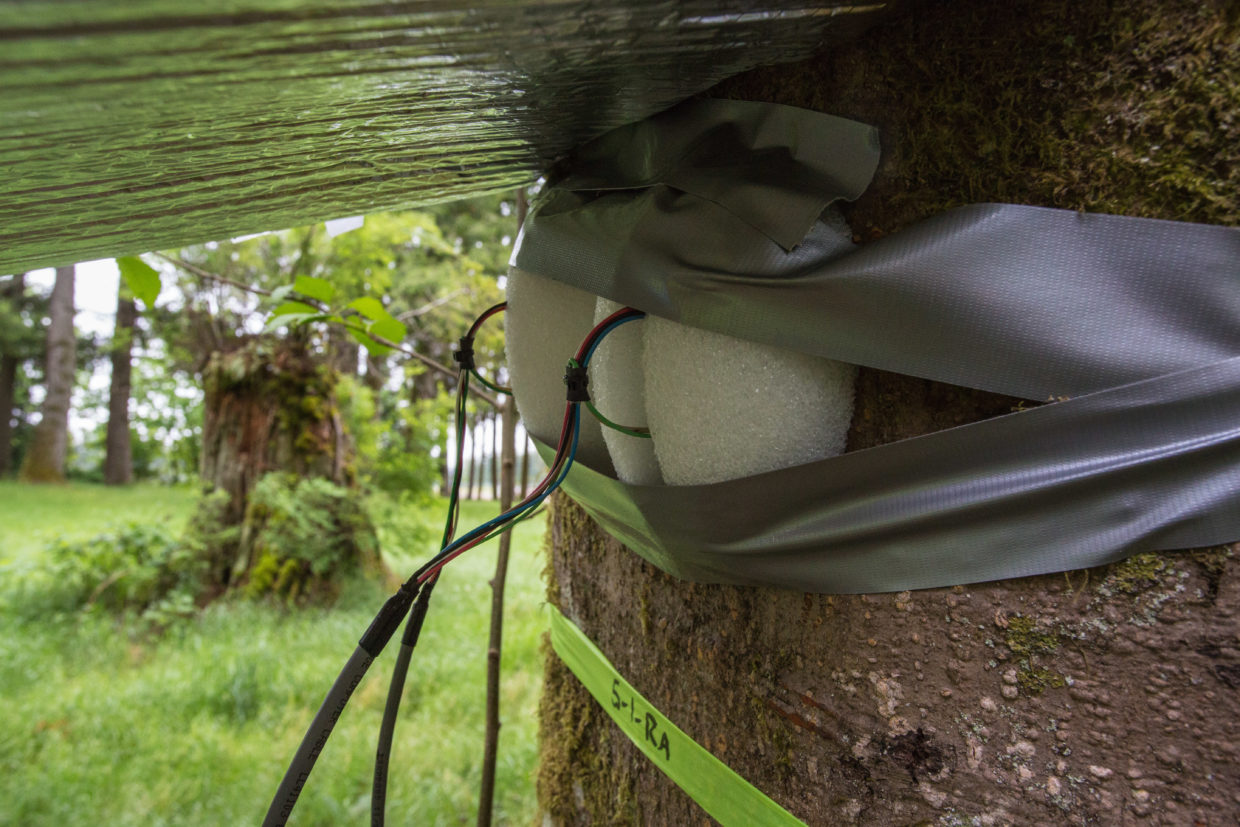Tree Project
Purpose
Our environment is quickly losing forested areas, that work as stormwater buffers, to impermeable urbanized landscapes. Currently, there does not exist a study that provides reliable and consistent information as to the stormwater value of the native species of trees in Western Washington state. This is an issue for local managers that need to make decisions based on the value of these trees. Our goal is to provide a comprehensive dataset that can be used to argue for the long-term conservation of established native tree stands in areas facing construction.
Scope
Two areas with diverse microclimates near Olympia, WA have been outfitted with a variety of environmental sensors. These sensors are either measuring ambient climate variables or are associated with individual trees. Four species common to the pacific northwest were chosen. This includes two evergreen species douglas fir (Pseudotsuga menziesii) and western redcedar (Thuja plicata), and two deciduous species, red alder (Alnus rubra) and bigleaf maple (Acer macrophylum). Over two years, several rain events and antecedent dry periods will be targeted. Data from these events will then be evaluated in order to quantify how much precipitation, which would contribute to stormwater volumes in urban environments, is being used by these trees.
Project Summary
Planting trees in rain gardens, bioswales, and other green stormwater infrastructure is a popular best management (BMP) practice for stormwater engineers. However, stands of native trees that exist in and around urban areas face removal as cities continue to expand. By presenting the unique stormwater value of existing native trees with a data rich study we hope to show that it is possible to include the conservation of these species in highly quantitative BMP frameworks that are used to ascribe stormwater credits.
Timeframe/timeline
2 years starting in the Summer of 2019
Parameters measured
Transpiration (sap flow)
Interception (precipitation – throughfall)
Precipitation
Soil Moisture
Solar Flux and Photosynthetically Active Radiation
Wind Speed and Direction
Temperature and Relative Humidity
Elements Included in this Project
There are eight tree sampling stations. Each sampling station has at least eight trees equipped with sensors to measure transpiration via sap flow and a network of troughs with at least six rain gauges that are able to capture water penetrating tree canopies. Several soil moisture sensors to observe soil wetting, canopy sensors to measure canopy temperature and relative humidity, and weather stations to measure ambient conditions are also included.










